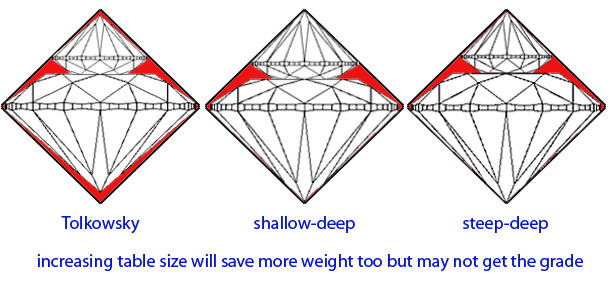strmrdr
Super_Ideal_Rock
- Joined
- Nov 1, 2003
- Messages
- 23,295
Thanks too Brian at WF for the graphic he posted in another thread..Date: 1/19/2008 3:32:03 AM
Author: strmrdr
I can get you that answer tomorrow but shallower crowns will yield 2 heavier stones from the same octahedron rough compared too higher crowns.Date: 1/19/2008 2:59:22 AM
Author: DiaGem
Strmrdr,
If the above examples had the same girdles, depth and diameter..., which one would weigh more?
The shallow or deep crowned one?






300x240.png)